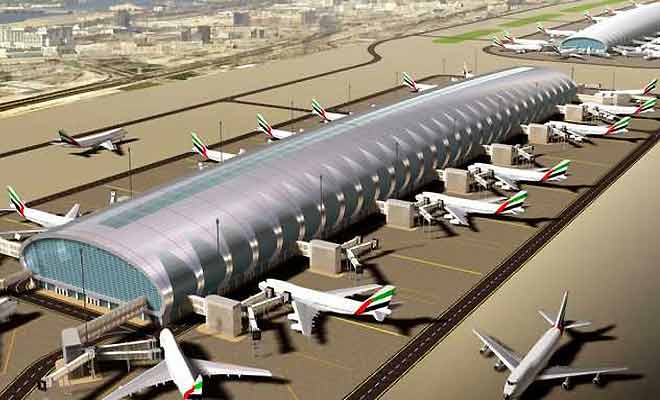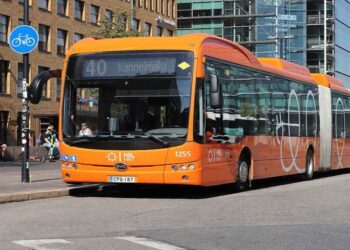Stockholm-Arlanda airport is situated 37km north of Stockholm and 40km southeast of Uppsala in the Sigtula municipality of Sweden. It is one of the top three airports in Scandinavia by size and is the largest airport in Sweden.
It is owned and operated by Swedavia (earlier known as LFV Group). It was officially opened in 1962 and is a hub for 84 airline operators, which include 64 international, two domestic and six international / domestic airlines.
The airport handled about 21 million passengers in 2013 and is expected handle 35 million passengers by 2040. Nordic Aero began its cargo handling services at the Stockholm-Arlanda airport in 2012 with launch customer DHL. The Swedavia Group introduced a SEK 13bn ($2bn) development plan for the airport in January 2014, which will be implemented in a phased manner over the next 30 years. Phase 1 of the plan, estimated to cost about SEK 7bn ($1bn), will run for the first 10 years.
A new pier, an expanded security checkpoint, and other commercial and retail spaces will be built at the terminal 5 in phase 1 of the development plan. Sky City Office One, a 15,000m2 office complex located right next to the airport, will be constructed in later phases.
Terminal features at Stockholm-Arlanda
The airport has four passenger terminals and five cargo terminals with a total of 50 terminal gates and 54 remote gates. The passenger terminals include two international terminals and two domestic terminals. Terminals three and four are domestic terminals, while terminals two and five are international terminals.
“It is owned and operated by Swedavia (earlier known as LFV Group).”
Terminal two, designed by architect Lars Wretblad, was built in 1990. It was refurnished and opened in April 2013. The modernised terminal features 2,000m2 of additional retail and seating spaces. It is nearer to the check-in, security checkpoint and baggage pick-up areas providing convenience to the passengers. A new baggage sorting facility will be opened at the terminal 2 in 2015.
Terminal five was opened in 1976. It is the largest terminal of the airport. It has three piers designated A, B and F. Pier F was opened in December 2008.
The domestic terminals, three and four, were built in 1989 and 1983 respectively. The Radisson Blu SkyCity hotel which was opened in 1993 links terminals four and five.
It includes a shopping area too. Terminal two, three and four are located to the left of SkyCity and terminal five is located to the right of SkyCity.
Each terminal is provided with information centres and stops for express trains, shuttle buses and rental car shuttles.
Escalators and lifts are provided in each terminal to reach the underground stations. Other facilities at the terminals include wireless internet, hotels, conference halls, restaurants and 52 retail shops.
Runways at Stockholm-Arlanda airport
The airport has three runways. Runway one (01L/19R) is 3,300m long and 45m wide. Runway two (08/26) is 2,500m long and 45m wide. Runway three (01R/19L) has a length of 2,500m and width of 63m. The requirement of a fourth runway is foreseen at the airport by 2025-2030. Runways one and three are parallel, with one of them used for take-offs and the other for landings simultaneously. They are separated by a distance of 2,300m.
Runway three is equipped with CAT III instrument landing system which enhances the flight landing even during bad visibility.
Parking facilities at the Swedish airport
The airport has a total of 100 aircraft parking spaces, of which 60 are present near the terminal gates and 40 are located on aprons as remote parking spaces.
Car parking facilities are available near to the terminals as well as at a distance from the terminal. The nearby parking facilities include multistorey parking garages and the SkyCity garage, located next to the terminals four and five. These offer both short-term and long-term parking.
Arlanda LÃ¥ngtid Beta and Arlanda LÃ¥ngtid Alfa are the long-term parking facilities. These are connected to the terminal by free transfer buses.
Special parking facilities are available for the disabled in all the parking garages. Motorcycles can be parked anywhere in the airport.
Check-in and security at the third biggest airport in Scandinavia
The airport offers multiple check-in modes such as SMS check-in, online check-in, physical check-in counters and check-in machines.
“Stockholm-Arlanda airport is 37km north of Stockholm.”
The number of security checkpoints at the airport was increased from 12 to 20 in 2007.
A new checkpoint, ten times bigger than the old checkpoint, was introduced in terminal five.
It has 11 security screening lanes in two levels.
Environmental concerns
Stockholm-Arlanda airport reduced its carbon-dioxide emissions up to a zero level by the end of 2012. The airport uses green approaches by which the aircraft can descend to the runway without interruption. Eight out of ten flights use the green approach for landing.
American Airlines is the first customer to benefit from the latest enhancements to the CRJ900 NextGen regional jet, which provides up to 5.5 per cent fuel burn reduction over earlier-generation CRJ900 aircraft.
“The new Bombardier CRJ900 NextGen airliner will optimize our fleet to fly the right size aircraft to the appropriate markets and lower operating costs by replacing older aircraft,†said Kenji Hashimoto, Senior Vice President – Regional Carriers, American Airlines. “With an impressive interior that allows us the flexibility to offer First Class, Main Cabin, as well as additional Main Cabin Extra seats, we are delighted to showcase our first CRJ900 NextGen aircraft in Dallas/Fort Worth and Dayton and look forward to introducing it to our customers later this year.â€
“In addition to offering American Airlines significant fuel cost savings per aircraft, as well as outstanding operational flexibility, the CRJ900 NextGen aircraft will provide customers with an improved experience that includes bright cabins resulting from large windows and LED lighting as well as large overhead bins,†said Ray Jones, Senior Vice President, Sales, Marketing and Asset Management, Bombardier Commercial Aircraft. “Together with the fuel burn enhancements and upgraded cabin amenities, we are firmly cementing the CRJ NextGen family of aircraft as the benchmark in regional aviation.â€
The CRJ900 NextGen aircraft’s advanced technologies include a conic-shaped exhaust nozzle that improves exhaust flow and reduces fuel consumption; various weight-saving initiatives; and a modern six-screen glass cockpit featuring the Rockwell Collins Pro Line IV integrated avionics suite, whose robust open architecture delivers reliable performance with growth capability to meet future communication, navigation, surveillance and air traffic management requirements.
As of March 31, 2014, Bombardier had recorded firm orders for 1,817 CRJ Series aircraft, including 343 CRJ900 and CRJ900 NextGen aircraft. Worldwide, CRJ Series aircraft are in service with more than 60 airlines and more than 30 customers operate corporate variants of the aircraft. The aircraft are operating in over 50 countries on six continents, and on average, a CRJ aircraft takes off every 10 seconds somewhere in the world. CRJ Series aircraft have transported more than 1.4 billion passengers and have logged more than 39 million flight hours and over 32 million takeoffs and landings.

































